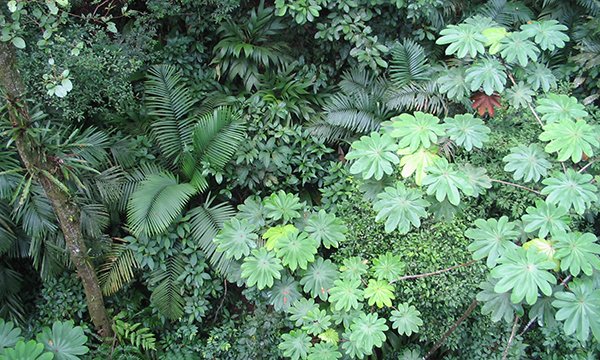Secrets of leaf size revealed

YOU MAY HAVE learnt at school that leaf size depends on water availability and that they are meant to help plants avoid overheating. But a new study that looked at leaf sizes around the world found that, rather than water availability, it all boils down to temperature, both high and low.
Leaf sizes can vary by as much as 100,000 fold, with some leaves having an area of just 1 mm2 while other can have an area of up to 1 m2. But what is driving these big differences?
“The conventional explanation was that water availability and overheating were the two major limits to leaf size. But the data didn’t fit,” says Ian. “For example the tropics are both wet and hot, and leaves in cooler parts of the world are unlikely to overheat,” explained Ian Wright, from Macquarie University, who led the new study.
A key finding from the study is that for plants all around the world the main factors limiting leaf size are the risk of frosting in cold nights, which can damage leaves, and the risk of overheating during the day.
“Latitude explains 28% of variation leaf size, globally. Warm wet regions are characterised by large-leaved species, warm dry regions and cold regions by smaller-leaved species. These patterns can all be understood in relation to the energy inputs and outputs to leaves, but only if you consider both the daytime (overheating) and night-time (freezing) risks,” Wright says.
“The most surprising result was that over much of the world the maximum size of leaves is set not by the risk of overheating, but rather by the risk of damaging frost at night. Larger leaves have thicker, insulating “boundary layers” of still air that slows their ability to draw heat from their surroundings – heat that is needed to compensate for longwave energy lost to the night-time sky,” says co-author Colin Prentice from Imperial College London, who co-ordinated the mathematical modelling effort.

Rainforest leaves, Panama. (Image Credit: Ian Wright)
Breaking old paradigms
One of the researchers main goals was to test the “energy balance theory”, first proposed more than 50 years ago, which predicts smaller leaves at hotter sites, explains Wright. “But the tropics (where leaves are large) are hot!” he says.
So Wright and his colleagues from Australia, the UK, Canada, Argentina, the USA, Estonia, Spain, and China analysed tens of thousands of leaves from 7,670 plant species to create an updated version of “energy balance theory”.
“By sampling across all continents, climate zones and plant types we were able to show that simple ‘rules’ seemingly operate across the world’s plant species, rules that were not apparent from previous, more limited analyses,” says Wright.
The findings of this study will serve to create novel and more accurate mathematical models to predict regional and global shifts in plant distributions under climate change, Wright explains. Also, the findings will help researchers reconstruct past climate from leaf fossils.
READ MORE:

